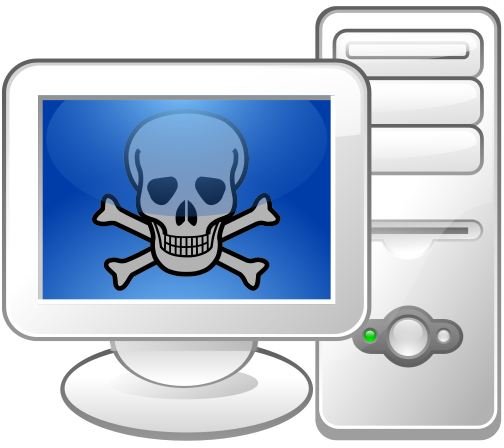Steps to Removing Over 50 Pieces of Malware in Windows and Mac OS
It is important to take steps towards protecting any networked devices, such as desktop computers, laptops, PDAs or smartphones from malware and intrusion attacks. This is because sharing files, allowing others to use your devices and employing an always-on connection makes you susceptible to malware and other type of attacks. Cyber-criminals are only waiting for a chance to attack peoples’ computers. When they able to infect or intrude into your computer through Internet, they can steal your personal and financial information, modify the computer settings, install additional malware files and perform other malicious activity.
The good news is that there are easy steps remove malware using automatic or manual removal techniques if an antivirus failed to clean the computer from malware infection. Below, you will find information on how to remove over 50 pieces of malware, written by Bright Hub experts and technology writers. If you have any family members, colleagues or friends that need help in removing malware, this page will really come handy.
Trojan Infection
Malware authors often use Trojan horses not only to infect computers, but also to download and add malicious files into the affected computer. Some Trojans will steal personal information where others will only irritate the computer user via pop-ups, hijacking the full desktop background and fake error messages. This type of infection can create a backdoor that gives attackers access to your computer and allows them to manipulate files, such as deleting, adding or replacing them. Trojans are distributed in email messages as attachments or as downloads from a link created by the bad guys. Check out the linked articles on how to remove several types of Trojan infection from Windows or Mac computers.
- How to Remove iBotnet from Your Mac
- Removing BAT Virus Trojan
- Facebook Virus Avoidance and Removal
- Guide to Removing Amazon EC2 Zeus Trojan
- How to Find and Use the Winfile.jpg Virus Removal Tool
- How to Foil and Stop a Gpcode.ak Trojan Attack
- Manually Remove Trojan.Alwayup Virus
- How to Remove the Google Redirect Virus
- Winlogon Trojan Removal Guide
- What is Win32 FlyStudio? And How Do You Get Rid of It?
- How to Remove a Trojan JS Redirector
- Fixing an Olmarik Trojan Infection
- Removing a Trojan Horse VB.VJE Infection
- Removal Guide for Win32 PSW.OnLineGames
- Removing Trojan Infection Causing IE Pop-ups in Firefox Browser
Worms
Another type of infection to avoid is called computer worms. Computer worms are similar to viruses because they can replicate themselves to damage the infected computer and other computers in the network. This type of threat is spread by exploiting vulnerable system or applications. Below are removal guides for prevalent computer worm infections.
- What Is Koobface and How To Remove It
- Manually Removing the Win32.Netsky Worm
- Conficker Removal Instructions
- Removing Stuxnet Computer Worm
- How to Remove a Trojan Boxed-A Infection
- Get the X Rated Audio Virus off Your Computer
Rogue and Fraud Software
Fake programs are often installed by a Trojan infection. Fraudsters make money each time their fraud software is installed and/or when the computer user makes a purchase from a non-existing software business. Fraud programs will display fake alerts, such as malware infections and system errors. They can disable important utilities in Windows, such as Task Manager, Registry Editor and Startup Manager. Most fake programs will also disable legitimate antivirus and firewall software. The security and computer settings are also modified by the malware, preventing computer users to connect to intended website, such as malware removal forums or legitimate anti-malware sites.
- How to Remove System Tools
- Fake Microsoft Security Essentials Alert Removal Guide
- How to Remove FakeAlert Spyware a.k.a Trojan.FakeAlert
- Removal for Antivirus Plus in Windows
- Step by Step Guide to Remove Antivir Solution Pro
- How to Delete Cyber Security
- Getting Rid of Pesky Malware - ieav.exe
- What to Do If Your Computer is Infected with Windows Police Pro Virus
- Removal Guides for the FakeVimes Trojan and Smart Virus Eliminator
- Antivirus System Pro Removal Instructions
- Removing Fake AntiVir System Message
- Steps To Remove Windows Spyware Warning Messages
- Getting Rid of Systemerrorfixer in Windows
- How to Remove Advance Virus Remover Software
- What is Antivirus 2009 and How Do I Remove It?
- Guide to Removing Malware Protector
- How to Remove Alpha Antivirus Software
- AV Security Suite Ransom-ware Removal
- Removing WinRar Spyware Guide
- What to Do About a Blue Screen Saying Warning Spyware Detected on Your Computer
Other Malware Infection and Compromised Website
Other types of infections that computer users have seen and removed from their computer are computer virues, spyware, adware, hijackers, keyloggers and other types of malware. Even website administrators have to deal with malware on their websites! This is because their website or webpages have been compromised. Check out these tutorials that will help you remove a variety of potentially harmful applications.
- Using AIMFix to Clean Up AIM Malware
- IE8 Redirect Problems - Possible Causes and Fixing Redirect Problem
- Fixing the Popping Spam Tabs in Firefox Browser
- Awola Removal Guide in Windows
- Fixing CMOS Virus and Spyware
- Dogpile Toolbar Spyware Removal Guide
- Removing Ad Yield Manager Spyware
- What Is a Bloodhound Virus? And How Do I Remove It?
- Steel Keylogger Removal Guide
- Removing Adware FLVTube Player
- What is About Blank Spyware? And How to Remove It?
- Detect and Remove Malware on Your Website
References
- Image credit: Malware logo by Skull_and_crossbones.svg: Silsor Computer_n_screen.svg: Everaldo Coelho and YellowIcon derivative work: Kizar (Skull_and_crossbones.svg Computer_n_screen.svg) [LGPL (www.gnu.org/licenses/lgpl.html)], via Wikimedia Commons
